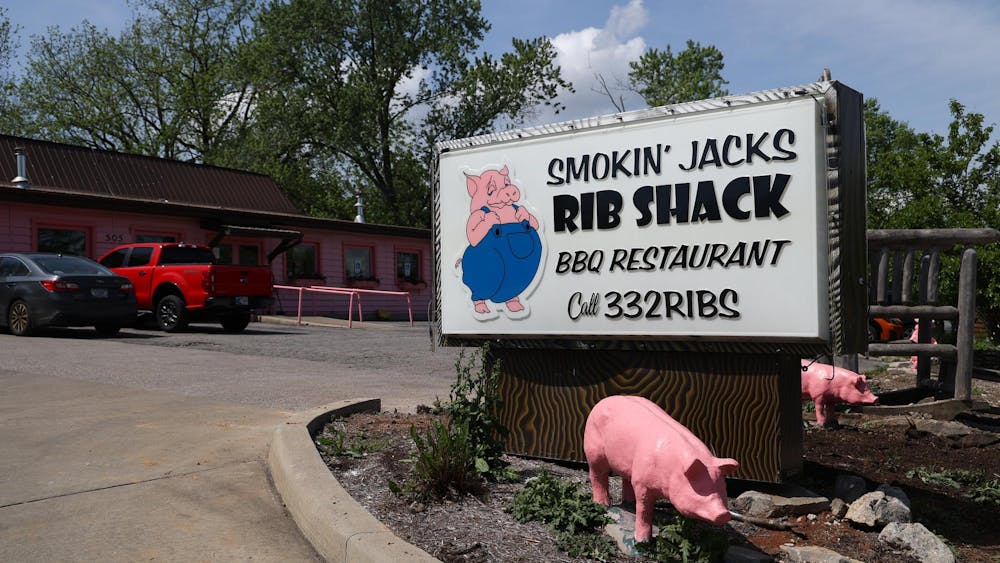Once upon a time, children's alphabet books were filled with magpies and bullfinches while adventure books starred pincushions living their lives one escapade at a time. That time was the 18th century and children's books and their place in society have come a long way since then. \nIU's Lilly Library proudly stores a sprawling treasure of 14,000 children's books from the 18th and 19th centuries, donated by the Ball family of Muncie. George Ball (1862-1955), a wealthy man from an industrious family, indulged his favor of children's literature along with his only child, Elisabeth. \nBooks upon books were added from all over the world over a course of 20 years, and the collection expands all the time. After her death in 1982, Elisabeth's collection of books was donated to the George and Frances Ball Foundation, an establishment in Indiana that focuses on promoting cultural resources. \nBill Cagle, director and librarian at the Lilly Library from 1975 to 1997, emphasized IU's loyalty and concern with children's literature, so the collection was donated to the Lilly Library in 1983.\n"Children's books are an important part of both literary and cultural history, and the Lilly Library is proud of its outstanding collection in this area," said Breon Mitchell, current director of the IU Lilly Library. "Students and scholars pore over the books both for research and teaching purposes."\nNot only is children's literature useful, like Mitchell said, but it also reveals underlying threads of society's view of children, which has changed over the years, just as the books have.\nGillian Brown, an English professor at the University of Utah, recently visited IU to speak about her book, "Children's Print Culture in the 18th Century." Brown said our society recognizes children as people. This recognition did not start until the 18th century because of ideas from philosophical thinkers like John Locke and Jean Jacques Rousseau. \n"They introduced the concept of children as unique individuals with needs and desires of their own," Brown said.\nBrown said the idea took time to be accepted and institutionalized in laws and practices. Later sciences, such as pediatrics and neurology, helped bring this idea to where it is today -- a conventional value of modern life.\nThe idea that society's view of children has changed over the past 200 years is not uncommon. Rebecca Cape, head of reference and public services at the Lilly Library, said one of the biggest differences she has noticed between 18th century and 20th century children's books is the change in language. Older books have much more instructive tones and contain more sophisticated idiom, as mentioned earlier.\n"This might have come from their tendency to see children as small adults," Cape said.\nComparing the books themselves reveals a significant change in the amount of credit given to children who read them. Older books nearly always have a moral.\n"Mother Goose's Melody: or, Sonnets for the Cradle," a book of Mother Goose rhymes published in 1791, contains a "lesson" at the bottom of each rhyme. The lesson to the familiar rhyme, "Patty Cake," reads, "The surest way to gain our ends is to moderate our desires."\nThe majority of older children's books was more edifying than entertaining. One of the most popular books of the 18th century was Mary Ann Kilner's "The Adventures of a Pin Cushion." This book, "instructs in the proper conduct of life," according to the exhibit catalogue, written by Elizabeth Johnson. This book became so popular a companion volume was produced, called "Memoirs of a Peg-Top for Young Gentlemen."\nJohnson noted maybe times have changed and children are not looked upon so much as adults. \n"Children's books had a dual purpose of instruction and amusement, and I think today's books have a stronger amusement component," Johnson said. \nThis emphasis on play can be seen even in the presentation of the books themselves.\nEighteenth century books are much smaller than children's books now. About the size of a small calculator, their pages are filled with simple type, calligraphy and carefully lined, detailed, realistic drawings. The covers are void of titles, pictures and authors' names and are instead filled with brown, orange and green antique-looking swirls and flowers. \nBooks now are much more diverse and eye-catching. Pictures of people, animals and make-believe creatures are framed by titles in fancy fonts plastered across the cover.\nPart of the reason for this is the difference in printing methods which are available now, but were not available in the 18th century. Originally, illustrations were made from wood-cuts, which limited illustration, Brown said. But during the 19th century, cheaper methods were discovered which allowed color illustrations. The small size and sparse, or nonexistent, covers were used to save money.\nThe Lilly Library's collection is open to anyone wanting to browse these marvels of the 18th century. Students can do research or just get in touch with their inner child.\nJohnson said the change in children's books perhaps reflects a change in society's priorities.\n"Perhaps there is more of a recognition of a valid and important place for 'play' in our lives," she said.
Flipping through fairytales
IU's Lilly Library preserves, houses thousands of antique children's books
Get stories like this in your inbox
Subscribe





